Maulbronn Monastery is the best-preserved Cistercian Monastery in all of Europe. It’s near Stuttgart, in the state of Baden-Württemberg, Germany. And it’s a UNESCO World Heritage Site.
Table of Contents
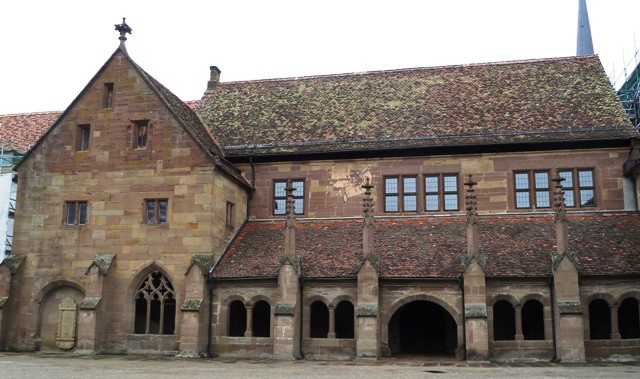
Maulbronn Monastery is located in Maulbronn. You have probably haven’t heard of this wonderful town in Germany, but it is one of my favourites. This little town is home to the best-preserved Cistercian medieval monastery in Europe. Located less than an hour from Stuttgart, this is the perfect day trip.
Related Reading: What It’s Really Like to Stay in a Castle Hotel in Germany
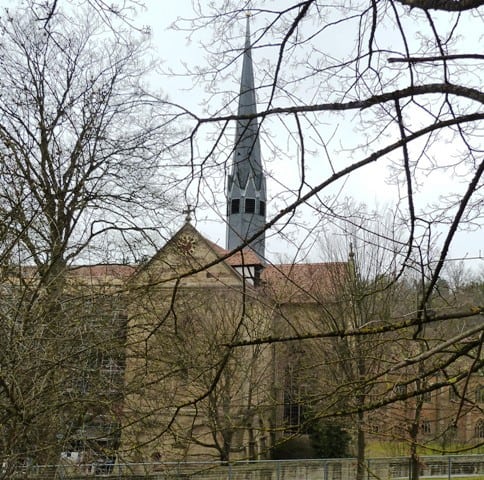
The Legend of Maulbronn
This wonderful monastery was founded in the year 1147. Understandably it has been through some renovations, the last being not too long ago. The founding of the Maulbronn Monastery happened under very interesting circumstances. Legend has it that some monks looking for a new location for a monastery.
These monks decided that the best way to find this new site was to let their mule out to wander. According to this legend, the mule stopped for water at this site and the monks took it as a sign from God that this would be the location of the new monastery.
And so when the mule stopped in Maulbronn, twelve monks starting building their new monastery there. I can’t help but wonder whether those monks would say today if they knew that their monastery is still standing and attracts visitors from all around.
Related Reading: Being An Expat In Germany: 5 Tips To Make It Easier

What to Expect at Maulbronn Monastery
Walking through the halls of Maulbronn Monastery was very peaceful. However, I also felt a little sad, knowing that the monks had to live in seclusion from the rest of the world. The monks would have spent much of their time only with each other.
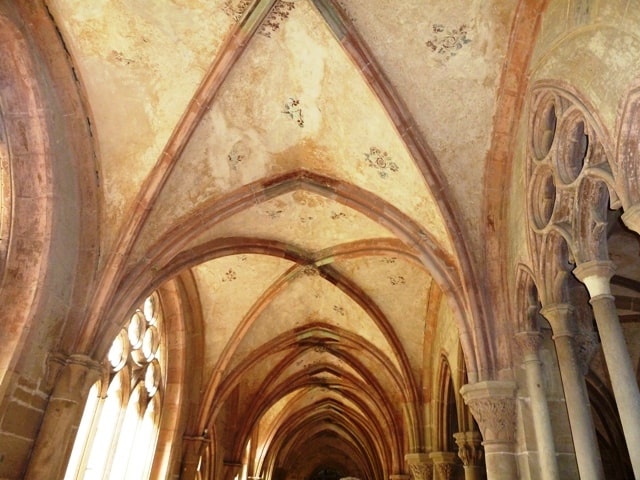
The monastery was also a very cold place in winter. There was no heating except in one small dark room. It got a lot colder after the Protestant Reformation broke out.
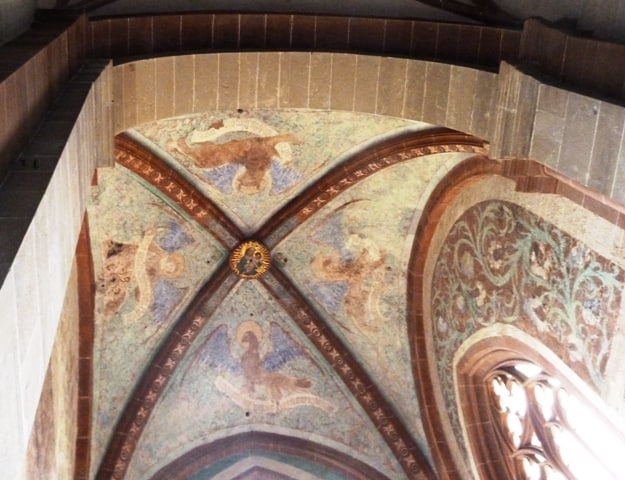
The Duke of Württemberg decided to take out the windows of the monastery. He used them in one of his own castles instead. The monks were left with cold winds blowing through the monastery. And yet, they persevered and the monastery was not abandoned.
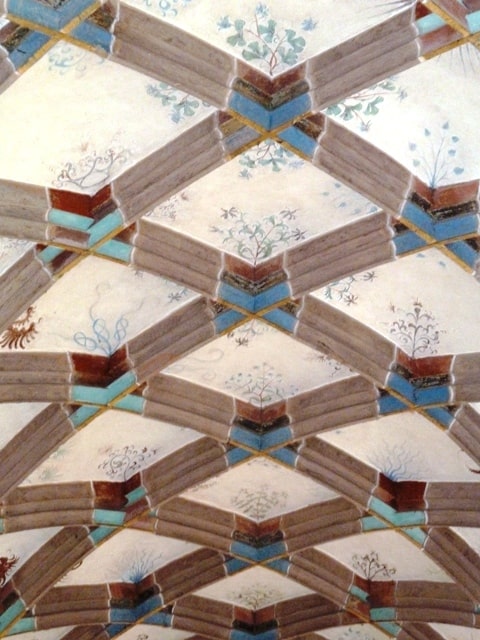
At least the monks had interesting ceilings to look at. I was fascinated by all the murals and hand paintings on the ceilings. It was one of the best parts of my visit to Maulbronn Monastery. Considering the way this modest monastery began its history, and the hard times that it befell, the monks still managed to add simple yet beautiful touches to it. It’s all in the simple details in this place of interest. You can’t help but appreciate it.
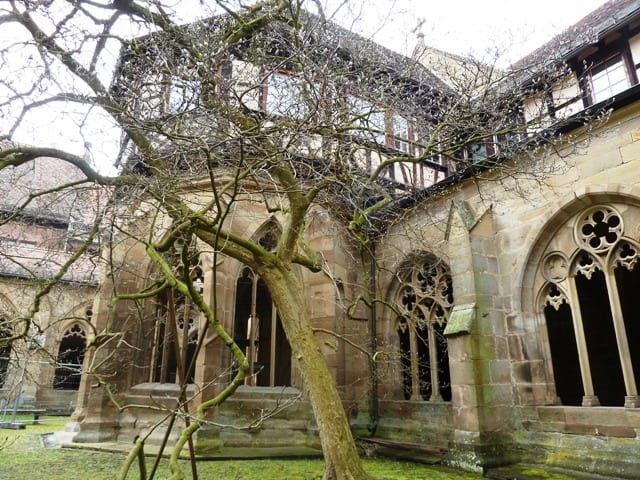
And when the monks tired of looking at the ceilings I can imagine that the courtyard would have been a very welcoming place.
Related Reading: 14 Wellness Hotels in Germany You Need to De-Stress at
The Life of the Monks
A monk’s life was not easy. The monastery was self-supported through their own hard manual labour. In addition, the monks were required to pray several times a day for a few times a day and night. This included waking up in the middle of the night.
The pews are designed and built so that the monks would be supported while standing. They were not allowed to be seated. This was so that their voices would carry further when they were in prayer. Praying that many times a day (and night) while still having to stand was probably not the easiest for them. And yet you have to wonder at the fact that they did it anyway, many of them staying monks for the entirety of their lives.
Cistercian monks also had to follow a no-talking rule. Talking was only allowed in one room of the Maulbronn Monastery. I would have been a terrible monk! How about you?

For all that holiness, you may be surprised to learn that the chefs at Maulbronn Monastery were creative when it came to getting around the vegetarian rule.
Legend has it that Ravioli, or Maultaschen in German, were invented at Maulbronn Monastery. It was a way of sneaking meat into the monk’s dinner which was supposed to be completely vegetarian.
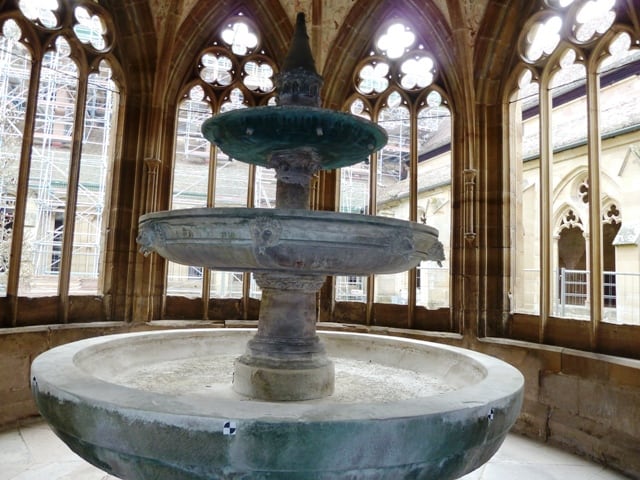
What Became of the Maulbronn Monastery
Maulbronn Monastery was eventually turned into a Protestant Theological College. Much to the monk’s chagrin, I would imagine. One of the most famous students was the German poet and winner of the Nobel Prize for literature, Herman Hesse.
His time at Maulbronn is illustrated in several of his works, most notably “Beneath the Wheel”. I imagine they’re quite interesting given that he was expelled from the school.
Related Reading: Brauneck Mountain: A Hike To The Most Beautiful View
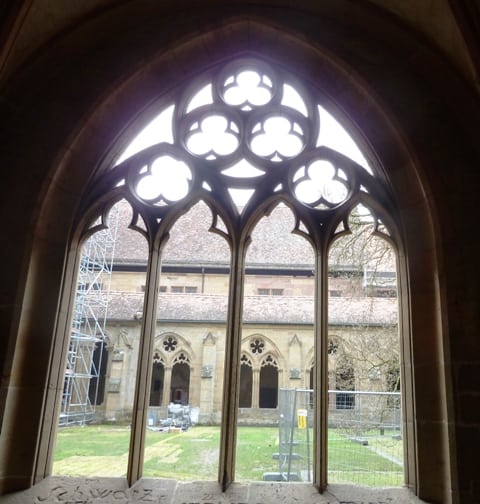
What to Know About Maulbronn Monastery
Maulbronn Monastery is located ~35 km NW of Stuttgart, Germany. For more info on opening hours, directions on how to get there see: Maulbronn Monastery Service. Audio tours are available in English for an extra cost. I highly recommend the audio. If you can’t make it to Germany, watch a virtual tour of Maulbronn Monastery.
Have you visited Maulbronn Monastery? I’d love to hear about your visit.
